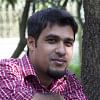Digital hammer: Breaking geographical boundaries with internet for all

With 17 years of commercial experience, including 5 years of executive management experience in the FMCG and telecom sectors, Yasir Azman served as Head of Distribution & eBusiness of Telenor. He has worked in various operational and leadership roles in Bangladesh, India and Pakistan, and joined as Chief Marketing Officer of Grameenphone in June 2015.
NS: What is it like to be back?
I've worked for 14 different countries where Telenor has its operations. That brings in a lot of experience from other markets. While most of those markets are far more progressed than Bangladesh, there are others that are quite behind. What I noticed is that Bangladesh has changed a lot since 2010 heralding an exponential advancement in technology.
When I see local televised dramas, I hardly see the previous actors anymore. It's all new faces. Same with corporate partners. New faces are everywhere. New and young faces. It's exciting that the country is so vibrant in terms of its youth.
NS: What are your plans for the youth?
We are in the communication business and our job is to engage with stakeholders. By 2016 we'd like to take 3G coverage to the entire country–bring in real content by involving the youth.
NS: What do you do beyond communication services?
When we say internet for all, it's not only to get connected. The goal now is to bring relevant products and services to our subscribers. We want to bring in music and TV channels and 'over-the-counter' content on social media.
Mobile communication is also going beyond connectivity and entertainment. It's one of the biggest tools for development. mHealth and Wowbox are two such products.
NS: What's Wowbox targeting now?
It's a platform where we provide our commercial information as well as educational content. If you've noticed, we have not made any communication about Wowbox but we have millions of subscribers. The plan is to build it into a one-to-one platform where people get the content they are searching for. The youth is interacting regardless of whether there is a physical shop or not.
NS: Currently it has only Bangla content. Plans to include English content? Also, what are the trending contents on it?
In Wowbox, our discount offers get the highest activity. Then come games and news. The model is open for all kinds of content depending on what we feel the customer may want. We are thinking about bring in fashion or food recipes as well.
NS: Where is telecom headed in Bangladesh?
More than 50 percent of mature markets are involved in digital media. It's a challenge but it is also a comfort zone for us, being part of the Telenor group. We have massive expertise in the digital arena.
NS: What kind of user characteristics is driving this constant change in products and services?
Highest usage is among the 16-25 year-olds. They tend to be the early adopters of internet and services. As they take over, it trickles down to a growth in the higher age groups as well.
NS: How does culture impact GP's marketing?
Our culture is highly dependent on emotions. As a result we bring that into play in every product and service we design.
NS: What are the biggest challenges faced by your team?
Two key areas. One deals with focusing on the digital area, where we are developing our capabilities via analysing customer insights. A customer who used to go and read a newspaper to get his information, now that person is getting it in the digital front. So targeting them is a major challenge. The other is investing in people and training them.
NS: How does home life create an impact on your work life?
I try to follow my 12 year old son. They are the next generation and I try to learn how they interact with the world. It seems everything they do is via the internet. They exchange currency through games. I try to learn how and what kind of videos he uploads online. For those of us from the 'voice communication' era, it will require a different, more limited source of information to learn the things young people do.
NS: The internet is breaking the geographical barrier. It has become an enabler for looking for a new experience.
The geographical barrier is gone for the younger generation. For young people, geographical boundaries melt away as long as there is the internet to connect them. For me, when I am abroad, I primarily hang out with my friends there, when I am here, it is with the people I know here. While I still rely on the visible and tangible experiences, the youth go looking for much more beyond that. And the internet is their greatest enabler.
NS: That should help reduce the disparity between the information among rural and urban groups, right?
Empowering the rural sector is an immense boost. I met a 76 year old woman form my village who was so excited to see me that she invited me over to tell her story. She is able to live comfortably while her family members work outside. She receives a stipend that she feels would not have been possible without mobile telecommunication. She might not have let her grandson work outside if she couldn't be in touch with him over the distance. Breaking down spatial differences is our biggest goal and challenge.
The interviewer is Editor of the career, tech, automobile and real estate publications of The Daily Star. He is also an entrepreneur of a baby clothing business and previously worked in advertising as a Senior Copywriter.
Photo: Tasdid H Chowdhury

 For all latest news, follow The Daily Star's Google News channel.
For all latest news, follow The Daily Star's Google News channel. 



Comments